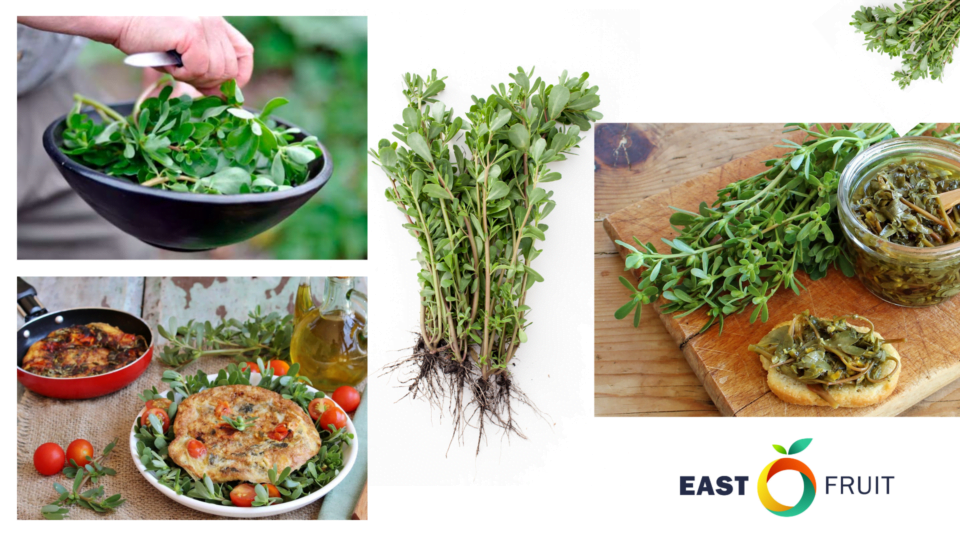Purslane, also known as Portulaca oleracea, is a plant that has gained popularity in recent years. With its rich nutritional content and versatility in cooking, it is considered by many as a superfood. However, purslane has also been labeled as a weed due to its invasive nature and ability to grow in almost any condition. This essay aims to explore the various aspects of purslane, including its origins, cultivation, and potential as a new income niche in the agribusiness industry.
Purslane is a succulent plant that originated in tropical regions of the Eastern Hemisphere. It has spread to many countries with warm climates, including Mexico, European countries such as Ukraine and Poland, and even Central Asian countries, EastFruit notes. In the wild, it can be found growing in sandy areas, along riverbanks, and on the outskirts of fields. Its ability to thrive in different conditions and multiply rapidly through self-seeding has led to it being considered a weed, particularly in agricultural fields.
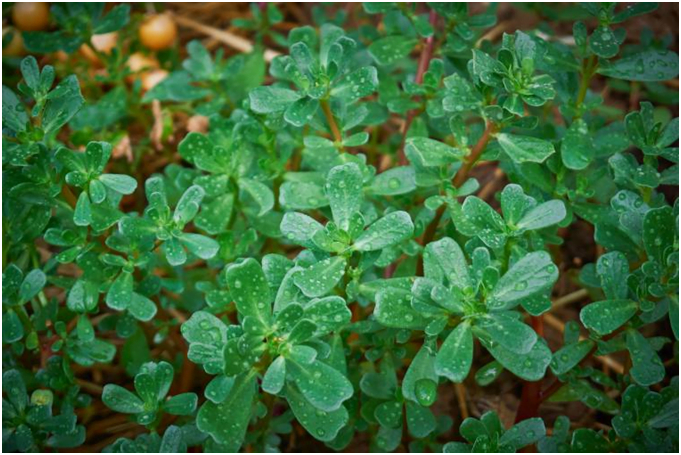 However, purslane has a long history of cultivation and consumption dating back thousands of years. It was cultivated in Ancient Greece, Ancient Egypt, and Rome. In fact, purslane was once considered a delicacy in certain regions of Georgia and was widely consumed by indigenous Americans. Even in modern times, purslane has found its way into the kitchens of many cultures. For example, in Italy, it is grown both intentionally and as a wild plant, used in various dishes and even given to animals as fodder.
However, purslane has a long history of cultivation and consumption dating back thousands of years. It was cultivated in Ancient Greece, Ancient Egypt, and Rome. In fact, purslane was once considered a delicacy in certain regions of Georgia and was widely consumed by indigenous Americans. Even in modern times, purslane has found its way into the kitchens of many cultures. For example, in Italy, it is grown both intentionally and as a wild plant, used in various dishes and even given to animals as fodder.
Purslane’s popularity as a food source has varied throughout history. In ancient times, it was appreciated by both commoners and royalty, with King Louis XIV of France reportedly serving it at his table. However, during the mid-17th century, rumors about its potential danger led to a decline in its consumption. This, combined with its association with poverty, caused purslane to be less commonly used in Italian and French cuisine.
Nevertheless, the nutritional benefits of purslane are undeniable. It is rich in omega-3 fatty acids, vitamins A, C, and E, and minerals such as magnesium, calcium, and iron. These properties, along with its succulent texture and mildly tangy flavor, have made purslane increasingly popular in vegetarian and vegan diets. It is often used in salads, stir-fries, and smoothies, adding a fresh and healthy twist to traditional dishes.

In recent years, the trend of pursuing healthier dietary choices has led to a resurgence in interest in purslane. It is being cultivated in several European countries, including France and Poland, specifically for its use as a salad ingredient. Its easy cultivation and adaptability make it an attractive option for farmers looking to diversify their crops and tap into the growing demand for superfoods.
Furthermore, purslane has the potential to become a new income niche in the agribusiness industry. Its high nutritional value and increasing popularity offer opportunities for farmers to cultivate and sell purslane as a specialty crop. Additionally, the market for purslane-based products, such as powders and supplements, is expanding rapidly, opening up new avenues for entrepreneurs and agribusinesses to capitalize on this emerging trend.
In conclusion, purslane is a versatile plant that has been both loved and neglected throughout history. Its return to the forefront of culinary and health-conscious trends showcases its potential as a superfood and as a lucrative crop in the agribusiness industry. With its nutritional benefits, adaptability, and increasing demand, purslane offers opportunities for farmers and entrepreneurs to explore new income niches and contribute to the ever-expanding world of superfoods.
Portulaca is a versatile plant that has been traditionally grown in poor, organic-poor soils, predominantly rocky soils. It thrives in saline soils, drought conditions, high temperatures, and direct sunlight. However, it suffers greatly when grown in fresh and/or heavy substrates or exposed to temperatures below 10°C.

Once you decide to grow portulaca, you need to consider how to cultivate it and on what scale. You can grow it in open ground or in pots, but you must be cautious due to its high reproductive capacity. If portulaca finds a favorable environment, it tends to grow uncontrollably, to the point where it becomes a real weed.
While decorative flowering purslane is propagated by seeds, another type of propagation is possible for garden purslane – simply cut the stem with a sharp blade at the node and place it in soil prepared by mixing peat and sand. If placed under sunlight, in a protected environment with a constant temperature of at least 20°C, you will see that within less than 15 days, the stem will begin to root and form new vegetation. The best time to plant portulaca is in May when the risk of late frost is eliminated. In fact, portulaca is not afraid of parasites, diseases, heat, or drought; it only risks perishing due to excessive watering. Portulaca usually perishes at the beginning of winter, particularly when the temperature reaches freezing point.
Fresh, canned, cooked, and even dried purslane can be used in various culinary creations. Some restaurants in the European Union serve dishes based on pomegranate, goat cheese, and purslane leaves. Purslane is also fried in batter, used in omelettes, paired with yogurt and tomatoes, and boiled to complement breaded dishes with onions and boiled potatoes.
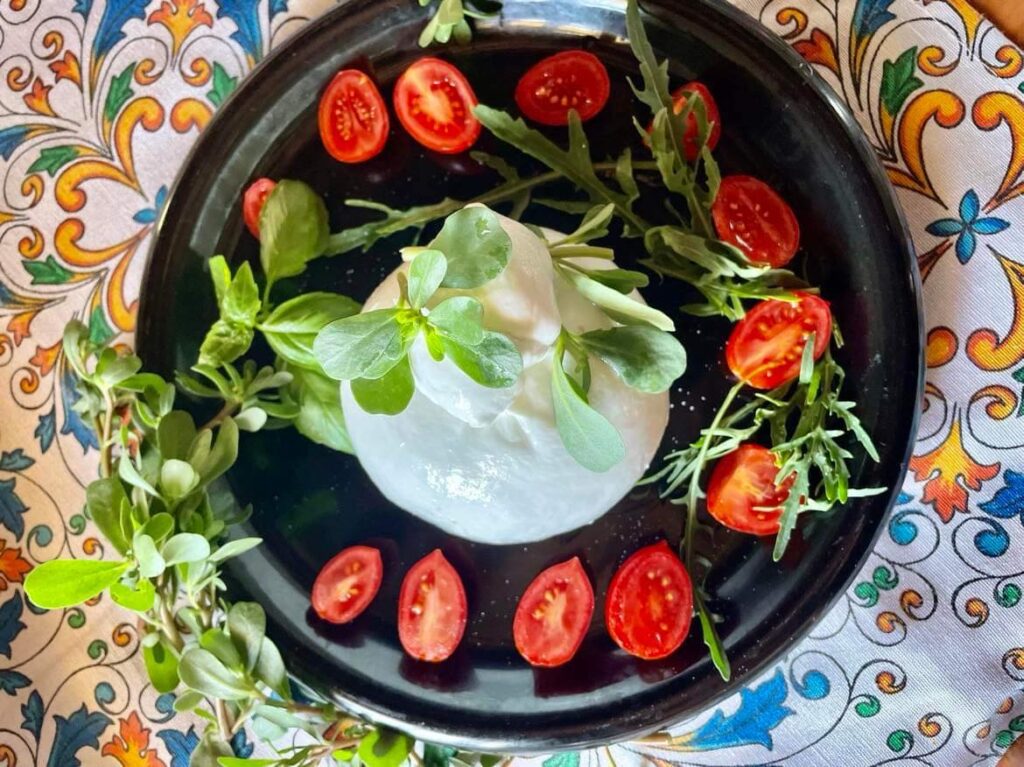
Besides its culinary uses, purslane is pleasant to taste. Its juicy leaves are aromatic and slightly reminiscent of lemon. Purslane is crisp, like young cucumbers, and its stems have a slightly pungent flavor. Its leaves and young upper stems can be used in food, but they should be harvested before flowering because after flowering, the leaves become coarse and are no longer suitable for consumption, either raw or cooked. Purslane pairs well with soups, vegetable salads, and spicy sauces. Additionally, purslane can be pickled or salted for the winter.
For example, in online stores in Eastern Europe, pickled purslane is offered at a cost of $6 per kilogram. In Uzbekistan, young stems and leaves (preferably harvested before the plant flowers) are used as a garnish for meat and fish dishes – boiled with garlic, vinegar, vegetable oil, or sautéed with onions in vegetable oil. Raw leaves and young stems, as well as cooked flowers, are used for salads in Central Asian countries and are boiled for stews. They are pickled, stewed, and marinated with spices (anise, pepper, carrots, coriander, etc.), stewed with tomatoes, and used to make an “encircled” omelette with purslane branches. An interesting recipe in Uzbekistan is to pickle or marinate purslane with cucumbers.

It is also worth noting that purslane freezes very well! In home conditions, its stems are blanched for 4-5 minutes, then drained in a colander and packaged in portions in plastic bags for freezing.
In conclusion, portulaca is a resilient plant that can be grown in various environments, and it offers a range of culinary uses. Its ability to adapt to difficult conditions makes it an excellent choice for both experienced and novice gardeners. The versatile nature of portulaca allows for creative and tasty dishes to be enjoyed worldwide.
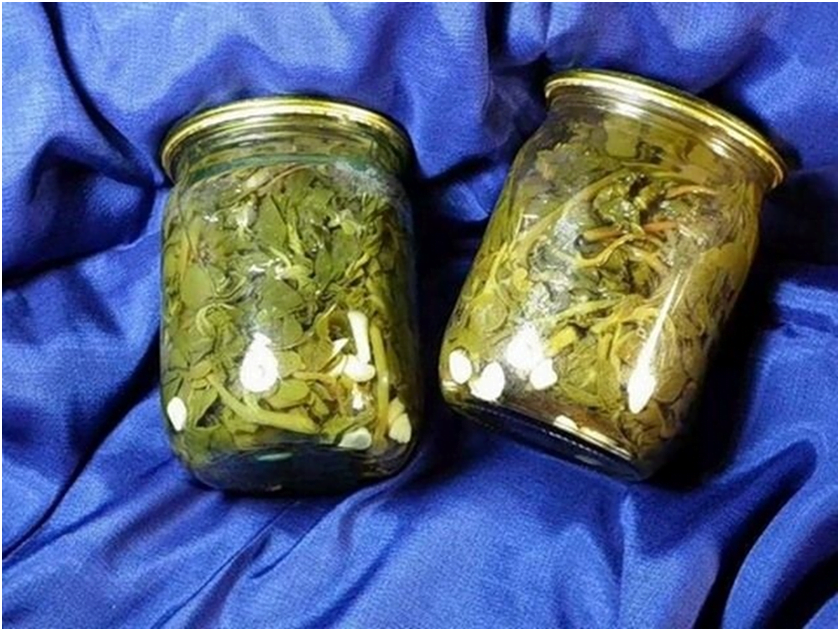
Portulaca, also known as purslane, is a versatile and nutritious plant that has been widely used and valued throughout history. It is an excellent ingredient that can be found in many traditional dishes, demonstrating the importance it has had in popular culture.
Portulaca is commonly used in various cuisines and is known to complement dishes that include potatoes, cucumbers, or tomatoes. Its leaves not only quench thirst but also increase appetite and vitality. In addition to being used as a vegetable, it is also used as a spice and seasoning in sauces and mayonnaises.
In France, Armenia, Tajikistan, and Korea, purslane is used in vitamin-rich salads mixed with other leafy greens. It is pickled, marinated, and used as a flavorful garnish for soups, meat and fish dishes, fried potatoes, and mashed potatoes. Marinated purslane pairs exceptionally well with meat and fish dishes.
Fresh young leaves and shoots of this plant are often infused in grape wine, creating a beverage that is not only delicious but also possesses medicinal properties.
However, it is advisable to consume purslane in moderation or avoid it altogether during pregnancy or if you have kidney stones. This is because like sorrel, purslane contains a high concentration of oxalic acid.
From an Italian perspective, one can delve into the renowned Roman salad, which is a delectable mix of wild herbs, typically including arugula, chicory, watercress, salsify, wild chicory, fennel, common sorrel, pimpernel, dandelion, rapunzel, poppy, plantain, barberry, agretti, chervil, San Lorenzo grass, and, of course, purslane.
In Sicily, purslane, known as “pursicata” in Sicilian, is used to prepare a salad of tomatoes, onions, and cucumbers, dressed with olive oil, salt, and vinegar, to which a few fresh purslane leaves are added.
In Georgia, it is boiled and served as a delicacy, dressed with oil and garlic.

Purslane has gained popularity in the agrifood, pharmaceutical, and cosmetic industries as a superfood. It is highly valued for its abundant nutrients, with vitamin C and Omega-3 fatty acids taking the lead. It is even referred to as a “vegetable fish” due to its omega-3 content.
Purslane’s high concentration of vitamin C and polyphenols gives it strong antioxidant properties. The aerial parts of the plant contain proteins, sugars, microelements (zinc, copper, manganese, nickel, iron), and macronutrients (calcium, magnesium, sodium, potassium). It also contains organic acids, alkaloids, saponins, and other glycosides, noradrenaline, significant amounts of vitamins such as carotene, tocopherol, ascorbic acid (up to 0.3%), and nicotinic acid, as well as mucilages and resinous substances. The seeds contain fatty oil, including linoleic, oleic, palmitic, and other fatty acids. Purslane has a much higher concentration of alpha- and gamma-linolenic acids compared to spinach.
The leaves of purslane contain carotenoids that synthesize vitamin A in the human body. This vitamin is often referred to as the “beauty vitamin” due to its impact on skin health and vision. Human daily requirements for vitamin A are 800 micrograms, and purslane contains 65 micrograms per 100 grams. The leaves also contain ascorbic and nicotinic acids, with ascorbic acid being useful for the immune system and nicotinic acid regulating all metabolic processes in the body, especially lipid metabolism.
In ancient Egypt, purslane was considered a medicinal plant, and its leaves and stems were added to food. In ancient Greece, it was used as medicine. Avicenna revered purslane and considered it essential to consume due to its effectiveness as a natural remedy. Pliny the Elder also recognized the benefits of purslane and extensively used it in his practice, while Hippocrates referred to it as a “blessed” plant.
Purslane aids in the treatment of various ailments, such as restoring cholesterol and glucose levels, treating neurodermatitis and psoriasis, alleviating inflammation of the urogenital system, normalizing cardiovascular activity, stimulating insulin production, and reducing blood sugar levels. It is also effective against tissue helminthiasis, myopathy, conjunctivitis, gum inflammation, respiratory diseases, asthma, liver diseases, and gallstone disease.
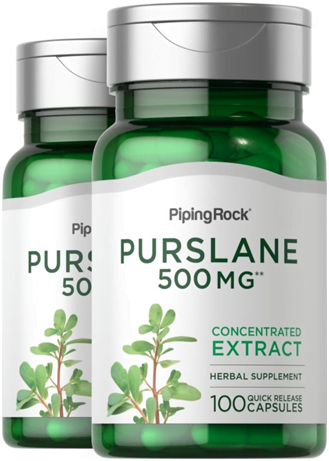
The medicinal properties of purslane also make it beneficial for treating flatulence, kidney function disorders, urinary system diseases, and sleep disorders. Due to its ability to lower blood sugar levels, purslane is used in medicine for treating patients with mild forms of diabetes.
Dieticians recommend consuming purslane to those who want to lose weight or maintain their weight due to its easily digestible protein, organic acids (oxalic and nicotinic), vitamin complex (C, B2, and PP), glycosides, carotene, mineral salts, and various microelements.
Purslane is also used in the field of cosmetics, as it is added to the composition of masks to stimulate wound healing, eliminate furuncles, scars, and pigmentation.

Purslane juice is helpful in alleviating inflammation from insect bites such as mosquitoes and bees, as well as from venomous snake bites. This plant possesses anti-inflammatory, soothing, antimicrobial, antifungal, pain-relieving, and rejuvenating properties.
“Purslane has the potential to become a new niche in the agri-food industry. With its diverse opportunities for earnings in the food, pharmaceutical, and cosmetic sectors, purslane cultivation proves to be a viable option. Not only is it easy to grow, but it also has good shelf life. One can offer purslane in the market in fresh, canned, frozen, and dried forms. Its success story could be similar to that of arugula (commonly known as rocket lettuce), which was once considered a weed but has now gained popularity as a key ingredient in various Mediterranean dishes. Similar to arugula, purslane can be deemed a superfood due to its unique taste, numerous medicinal properties, and benefits for human health.
Purslane’s versatility in different products makes it an attractive prospect for those seeking opportunities in the agri-food industry. Fresh purslane can be incorporated into salads, sandwiches, or used as a garnish for dishes, adding a distinctive flavor and nutritional value. Canned purslane can provide a convenient option for consumers looking for preserved greens throughout the year. Frozen purslane is an excellent alternative for those who prefer long-term storage while maintaining its flavor and nutritional benefits. Additionally, dried purslane can be utilized as an ingredient in various food preparations or as a medicinal herb.
The potential applications of purslane extend beyond the food industry. The pharmaceutical sector could benefit from the plant’s medicinal properties, as it has been traditionally used for its anti-inflammatory, antioxidant, and antimicrobial effects. Extracts or derivatives from purslane can be utilized in the development of drugs or supplements targeting specific health conditions. Furthermore, the cosmetic industry can explore the use of purslane in skincare products due to its rich content of vitamins, minerals, and antioxidants. Its potential benefits for skin health and rejuvenation make it an appealing ingredient for various cosmetic formulations.
Purslane’s cultivation presents notable advantages for farmers and entrepreneurs. Its low maintenance requirements and adaptability to different climates make it an ideal crop for cultivation in various regions. Additionally, purslane’s productivity and high yield, coupled with its ability to withstand drought and poor soil conditions, ensure a stable and profitable harvest. As market demand for purslane grows, there is an opportunity for farmers to diversify their agricultural practices and capitalize on this emerging trend.
In conclusion, purslane has the potential to become a sought-after product in the agri-food industry due to its variety of applications in the food, pharmaceutical, and cosmetic sectors. Its ease of cultivation, good shelf life, and rich nutritional and medicinal properties make it an attractive choice for consumers and businesses alike. As the success story of arugula has demonstrated, seemingly ordinary plants can transform into valuable assets by recognizing their unique attributes and capitalizing on emerging market trends. Purslane’s journey from a common weed to a superfood and beneficial ingredient holds promise for those willing to explore its potential.” – says Kateryna Zvierieva, head of the website of the EastFruit International Information and Analytical Platform, Development director of the Ukrainian Horticulture Association.
The use of the site materials is free if there is a direct and open for search engines hyperlink to a specific publication of the East-Fruit.com website.




